SPACE May 2024 (No. 678)
Since president Park Chung-hee’s recognition of the importance of landscape architecture as an extension of the national land development plan, landscape architecture in Korea has been in a state of academic and practical flux, and Jung Youngsun (principal, Seoahn Total Landscape Design & Consulting Group) is a first-generation landscape architect at the centre of this flux. Having followed the growth and trajectory of landscape architecture in Korea for some 50 years, Jung Youngsun has undertaken a wide range of projects, from government-led businesses to corporate and private works, and has spoken of landscape architecture as something that can express the character of Korea and that can serve as a tool for communicating with nature. And last April, the exhibition at the National Museum of Modern and Contemporary Art, Korea (MMCA) Seoul – which explored Jung Youngsun’s world of landscape architecture – opened and the documentary film by Jung Dawoon (co-principal, Giraffe Pictures) was released to the public. This article is a reworking of the press conference for the exhibition and the documentary film. In addition to the interview with Jung Youngsun conducted by SPACE, and it testifies to Jung Youngsun’s view and practice of landscape architecture through her unique voice.

Image courtesy of JINJIN Pictures / ©Giraffe Pictures
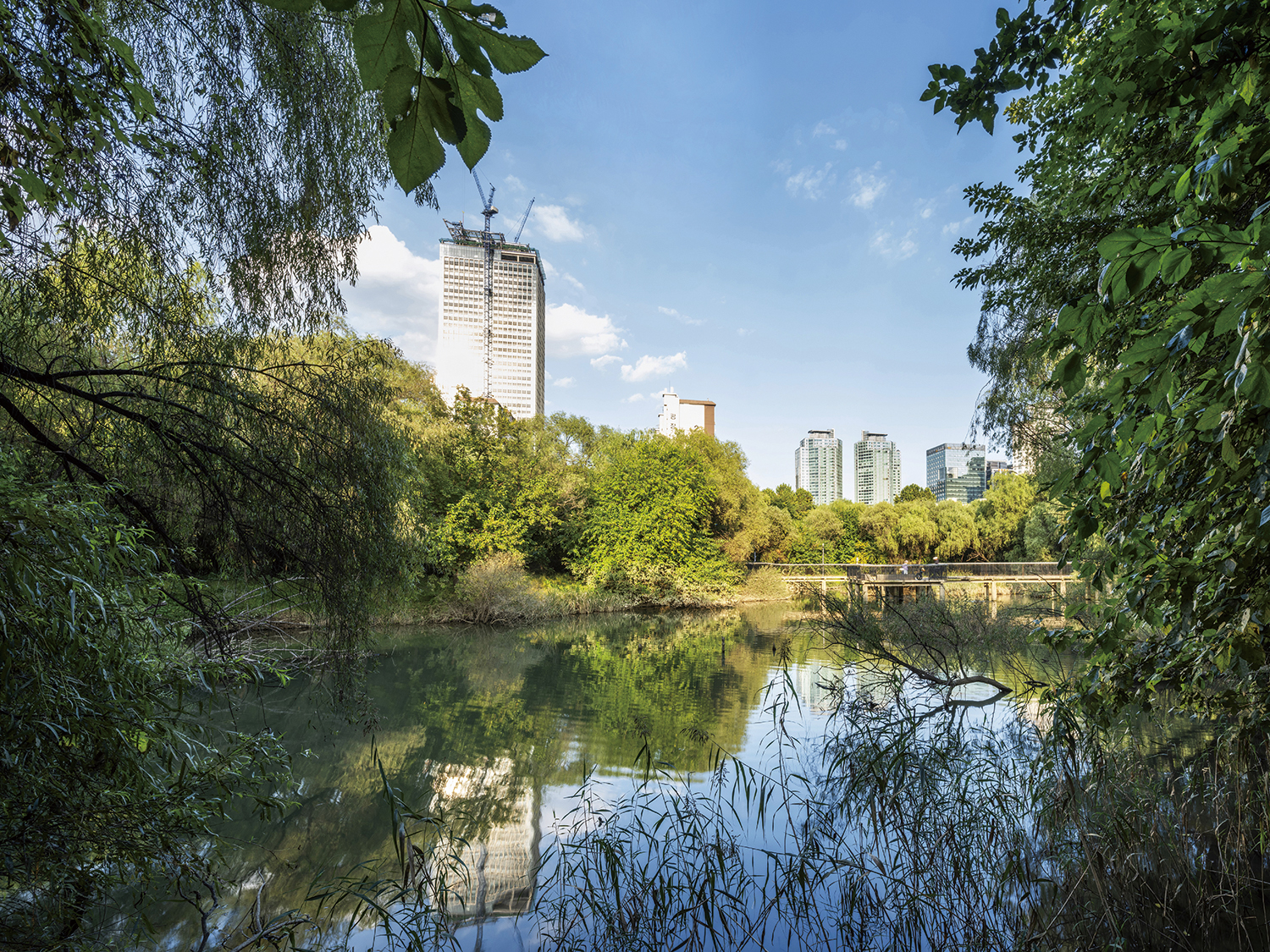
Yeouido Saetgang Ecological Park (1997, 2007). In 1997, the ecological environment was restored by taking Hangang River water and subway water to the riverside and lakeside, which were used as parking and sports facilities, to allow water to flow. As time passed and frequent sedimentation problems occurred due to the blocking of natural flow with the Hangang River, in 2007, an ecological sponge effect was proposed to convert the wetland part of the Yeouido Saetgang Ecological Park, which was undergoing landification, into a sponge-like land condition that can hold water. Image courtesy of MMCA / ©Jihyun Jung
Interview Jung Youngsun principal, Seoahn Total Landscape Design & Consulting Group × Park Jiyoun
Park Jiyoun (Park): Recently, the exhibition ‘For All That Breathes On Earth’ and the documentary film Poetry on Land were released to the public. I would like to know how you feel about them.
Jung Youngsun (Jung): I entered the department of landscape architecture at Seoul National University graduate school of environmental studies as a first-generation student in 1973, and just as I have grown older, landscape architecture in Korea has also matured. Landscape architecture was considered a secondary field to architecture, so it means a lot to introduce the field of landscape architecture to the public. I was embarrassed to be in this position, but I didn’t let that stop me from doing it, because I felt that I should prepare the way for the next generation.
Park: In 2023, you won the Sir Geoffrey Jellicoe Award, which can be described as the Pritzker Prize for the landscape architecture community. The organiser said that you had ‘interpreted the unfamiliar concept of landscape architecture that originated from the west to fit Korean soil and scenery’. How would you describe a landscape architecture that is able to express the character of Korea?
Jung: First of all, landscape architecture has to be in harmony with the surrounding scenery. You have to consider all the near, middle, and distant views, such as what kind of building is positioned where and beside what kind of tree, or how it harmonises with rivers and mountains. In relation to these surrounding scenes, our ancient classical scholars emphasised Borrowed Scenery (using the surrounding scenery as if it were part of a garden), looking over a low wall to water, mountains, or orchards. In China, the emphasis was on Miniascape (views within the garden that mimic the natural scenery), but landscape architecture in Korea is motivated by a different concept which concerns what we plant in our private garden and what we think of as a beautiful garden at home. I think the scenery in Korea was beautiful, rich, and diverse, so the element of Borrowed Scenery was strongly expressed, and as a landscape architect, I’m trying to continue to create landscape architecture that takes into account this Borrowed Scenery.
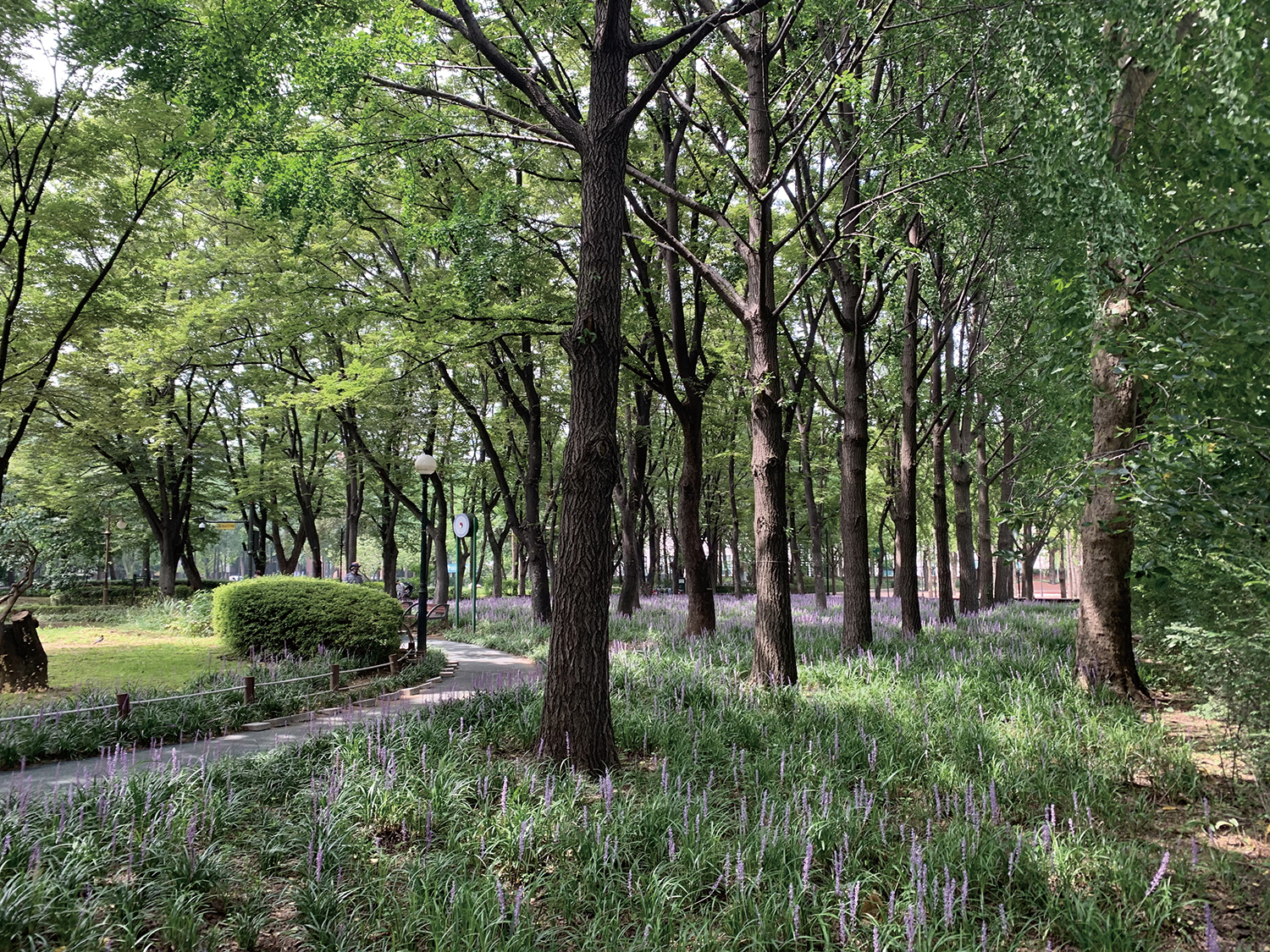
Asia Athlete Village Apartment (1986). In consideration of the location conditions adjacent to roads and residential complexes, artificial mountains and walking forest roads were created. Image courtesy of Seoahn Total Landscape Design & Consulting Group
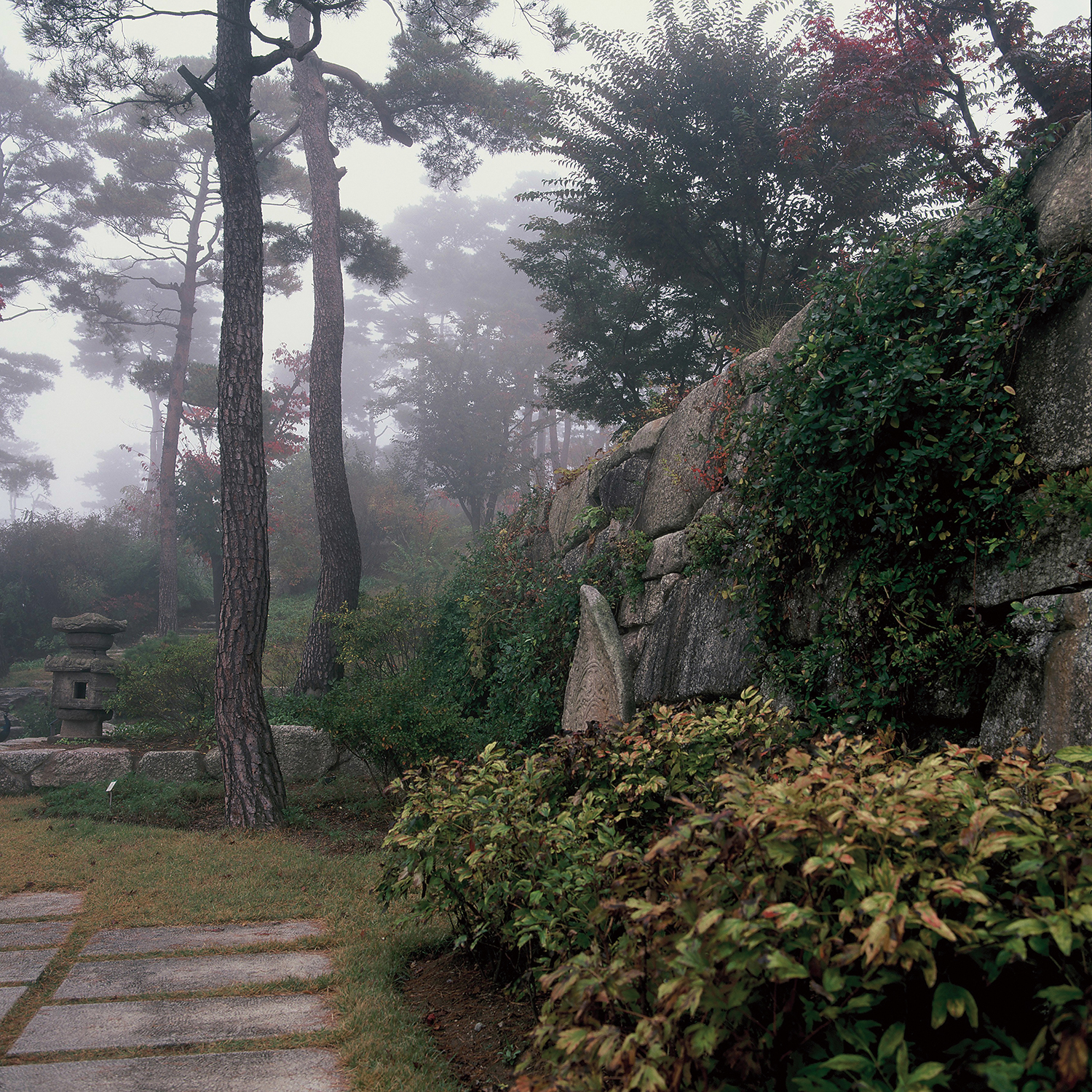
Heewon (1997). It is a garden created to commemorate the 15th anniversary of the opening of the Hoam Museum of Art, and it is a work to restore the old topography based on a beauty that is not restricted to the scenery of the wall and the principle of ‘Borrowed Scenery’ that connects the view inside and outside the wall. Image courtesy of MMCA / ©Yang Haenam
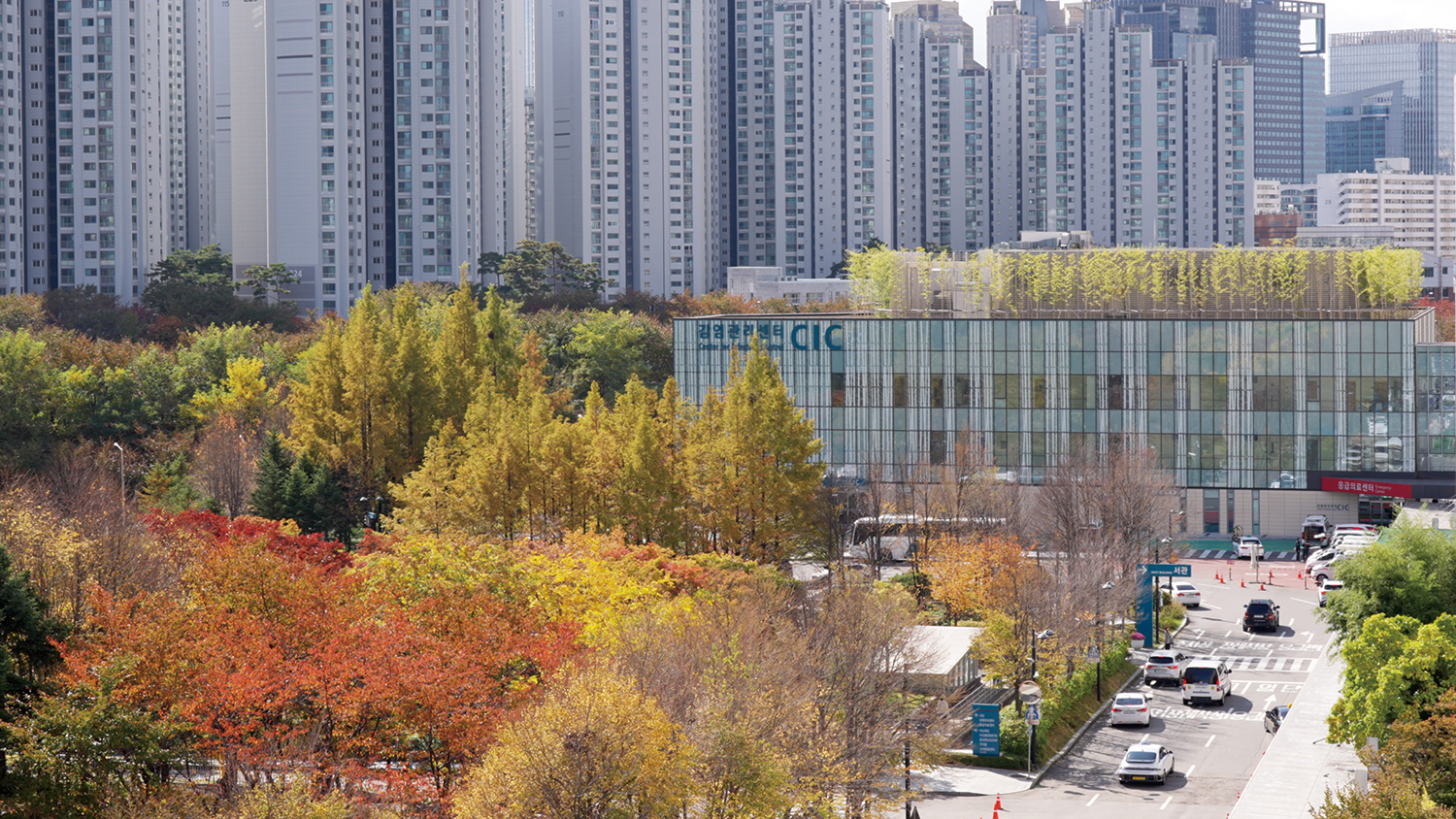
Seoul Asan Medical Center (2007). It degined deep forest-like form for patients, their families, and doctors to rest. Image courtesy of JINJIN Pictures / ©Giraffe Pictures
Park: You began your career with government-led projects such as the Asian Games Memorial Park and Asia Athlete Village Apartment (1986) and the Seoul Arts Center (1988). At that time, the architecture community was being asked by the government to build ‘large-scale’ buildings with a ‘Koreanness’. What was the situation for the landscape architecture community?
Jung: At that time, government officials couldn’t imagine working on landscape architecture with design drawings. They didn’t have any knowledge of landscape architecture, except to come to our office and tell us to plant trees quickly. At that time, many nationally significant projects were carried out by foreign companies, and there were only one or two landscape architecture offices in Korea. Before embarking on the large-scale project of the Asia Athlete Village Apartment, the government surveyed all the good trees in the country and made a list. The landscape architecture department in Seoul Metropolitan Government (SMG) had a wall full of pictures of trees, showing the types of trees common to certain regions, and we were asked to select from those on the wall. That reveals the extent to which the process was not systemised. The problem was that if I wanted to plant a particular tree, I had to go and see it in person. I couldn’t make a decision based on a picture. Besides, sometimes we need a particular tree, sometimes we need a forest, sometimes we need flowers. When I looked at the list, my head started spinning trying to figure out what to do with it. So I decided to include a number of trees to separate the residential areas from the roads, and I chose a pine tree that could be brought in from an arboretum. The plan was to use some of the trees on the list, as required by the government, to make things a bit easier. We were able to use a lot of trees from the list for the roadside, so for the trees in the village, we were able to get as many of our own choices as possible.
Park: In the Asia Athlete Village Apartment, you have provided landscape architecture that avoids walls and creates low hills to block the view to the outside but still creates an organic connection. What are the significant points in planning the land?
Jung: There’s no right answer because every site is different. It’s a process of determining what is appropriate for the location, architecture, and environment to create a land form of water, mountains, forests, or a streetscape, and it doesn’t depend on my preferences. For example, in the case of Seoul Asan Medical Center (2007), which was planned as a large lawn with a parking, it was changed into a forest-like form when I finally took over the design after being involved in the project as a consultant at the beginning. This was because a deep forest was needed so that the patients could live in the hope of seeing trees sprout in early spring, the patients’ families could take time out to rest, and the doctors could relieve their stress.
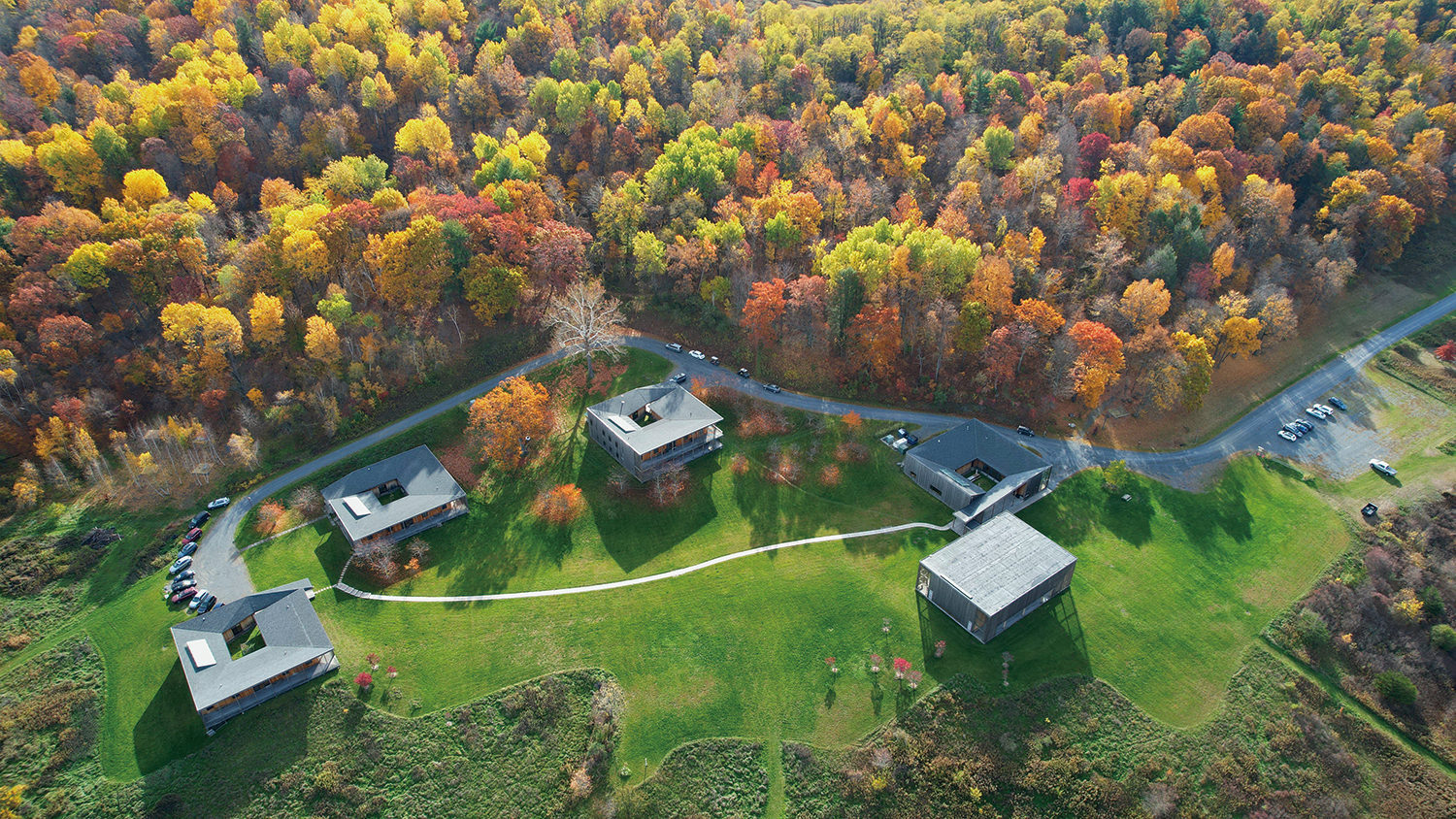
Won Dharma Center (2011). It is a Won Buddhism meditation center located upstream of the Hudson River in northern New York. Image courtesy of Won Dharma Center
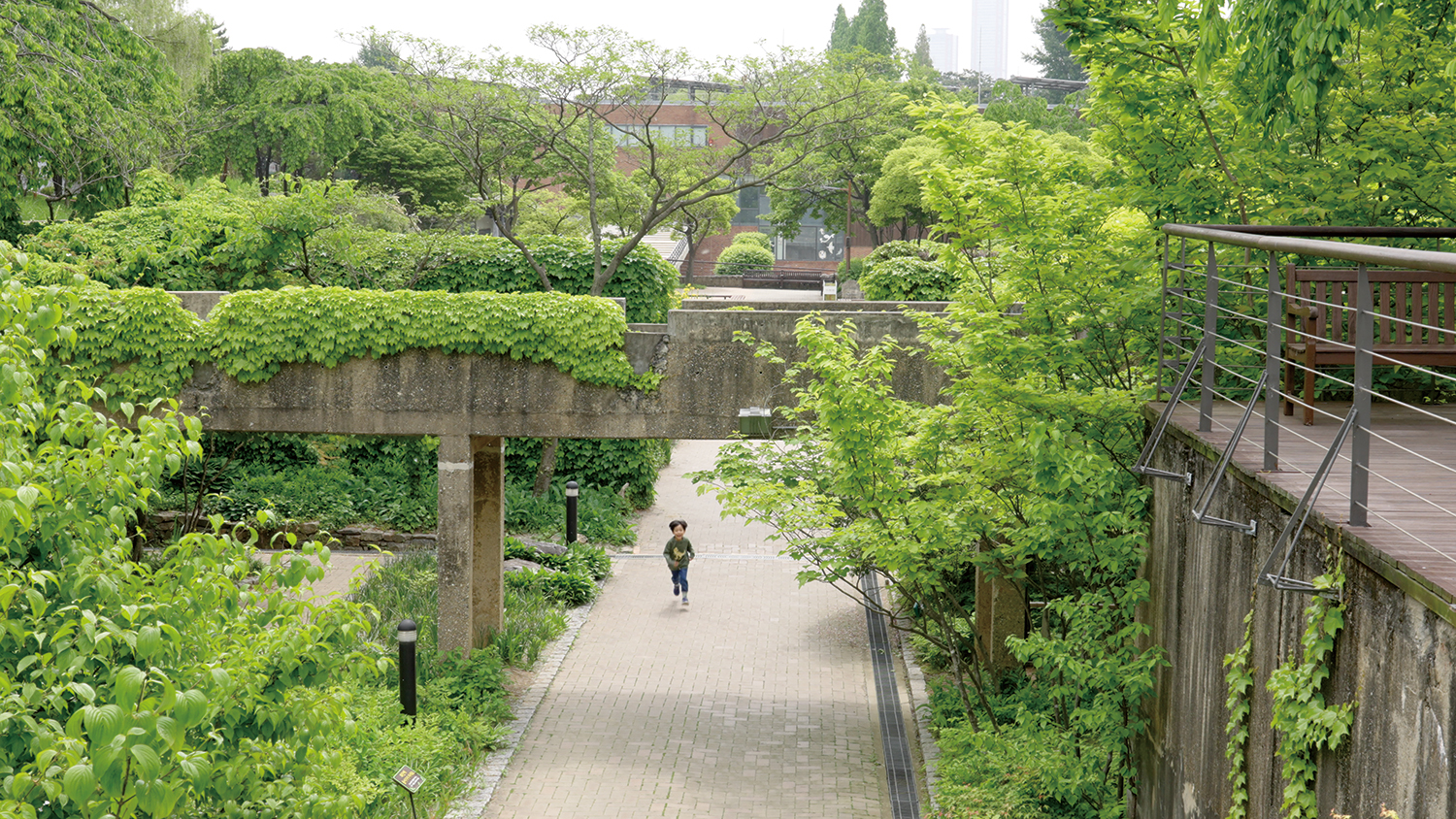
Seonyudo Park (2001). It is a park that has saved existing water purification facilities, and Jung Youngsun worked imagining a future where the remnants of reinforced concrete will be covered with greening. It’s environmental gardens spread out according to the flow of water. Image courtesy of JINJIN Pictures / ©Giraffe Pictures
Park: You approached Yeouido Saetgang Ecological Park (1997, 2007), Seonyudo Park (2001) and Gyeongchun Line Forest Trail (2017) with the attitude of regenerating the existing environment. There must have been some criteria for deciding what to keep and what to remove.
Jung: The choice of what to keep and what to get rid of can be a matter of design, or it can be related to the designer’s philosophy or view of nature. The term ecological park can be interpreted in different ways. It can preserve the plants, insects, and animals that originally lived there, or it can create a new ecosystem. In the case of Yeouido Saetgang Ecological Park, experts from different fields such as ecology, fish, and insects worked together to preserve the existing ecosystem. It was very difficult to maintain the existing willow trees instead of replacing them with facilities that residents could use, such as parking and sports facilities. There had been many accidents in the silver grass grove and barley fields, and there was a possibility of opposition from residents living in nearby apartments at that time. The Yeouido Saetgang Ecological Park was only possible because the director of the Hangang River management office of the SMG fully supported our ideas after much persuasion. In the case of a private project, it is relatively easy to get along with each other and work collaboratively, but it’s difficult to push forward a project of a local government with the consent of all individuals. In my case, I was lucky to have good mayors and vice-mayors of the local government who supported me in my work. The unanimity of the government officials in the design briefing was partly due to the fact that we explained our logic in a way that they could understand, but more importantly it was due to their full support for our efforts as they tried to understand landscape architecture.
In the case of Seonyudo Park, the idea of transforming Seonyudo, which had been used as a water purification plant, into a park arose in the context of the government’s project to develop parks along the Hangang River in preparation for the ‘88 Olympics. When I went to the site to participate in the design competition, I found that the beautiful scenery of Seonyudo in the past had disappeared, but the remaining water purification facilities seemed interesting. I thought that it didn’t make sense to rebuild a place like Seonyudo when the use and scenery had already changed from the old Seonyudo, so I started with the idea of making the best park possible while retaining the water purification facilities. It can be said that all that is left is Seonyudo, which has little to do with the old Seonyudo.
Park: How do you approach working with private companies that require a youthful sensibility, such as Sulwhasoo Bukchon Flagship Store (2022), and Seongsu Christian Dior (2022)?
Jung: For Seongsu Christian Dior, for instance, our main concern was to design it ‘like Dior’. We researched Dior’s private garden, Dior’s favourite plants, and the raw materials used in Dior cosmetics, while also considering the landscape architecture that Dior wanted to do. At the same time, since it’s in Korea, we filled one side with Korean plants.
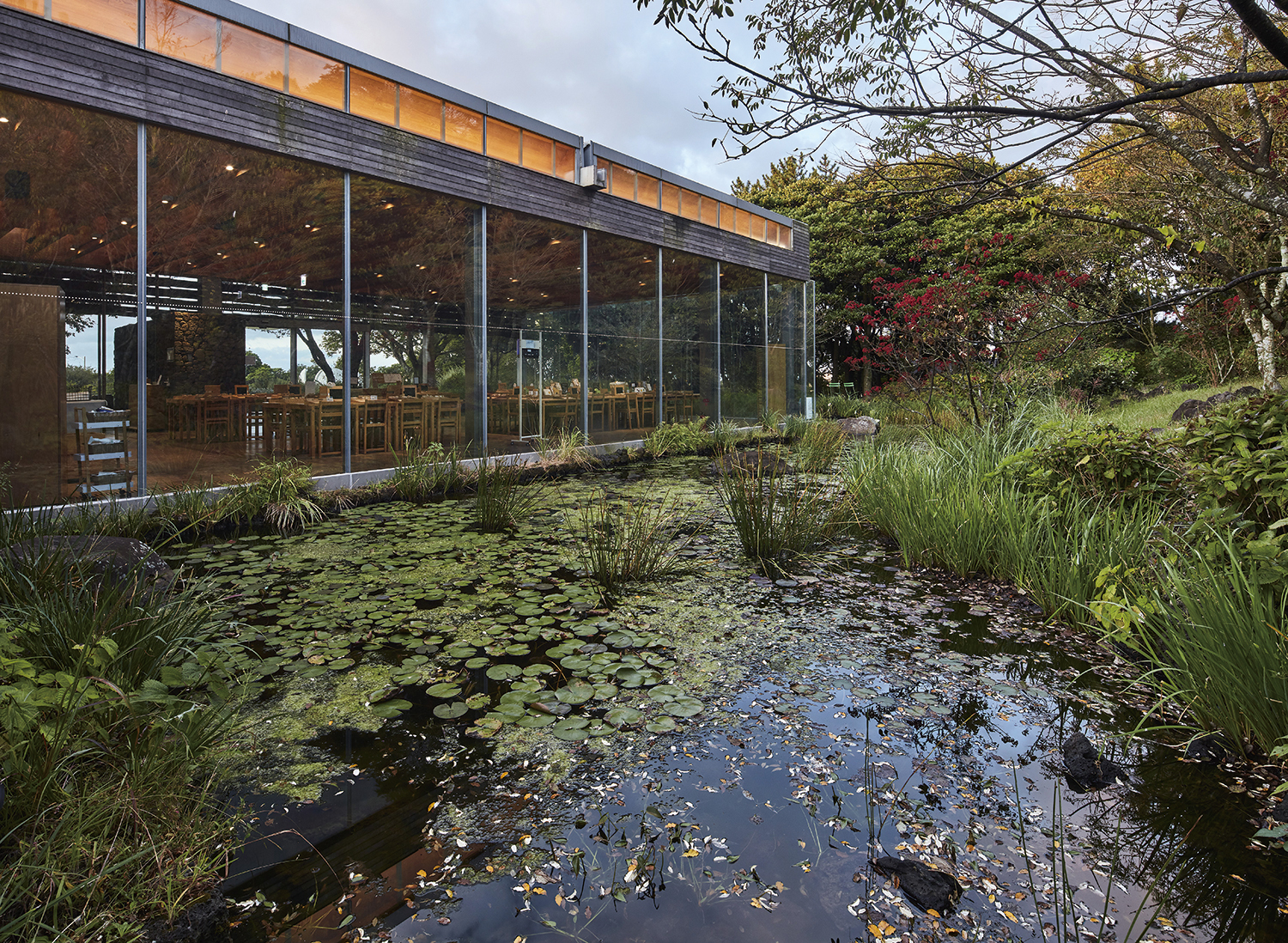
Jeju Osulloc Innisfree (2011, 2023). Among the four buildings for Osulloc, Jeju’s unique topography and Gotjawal Forest were created. Image courtesy of MMCA / ©Kim Yongkwan
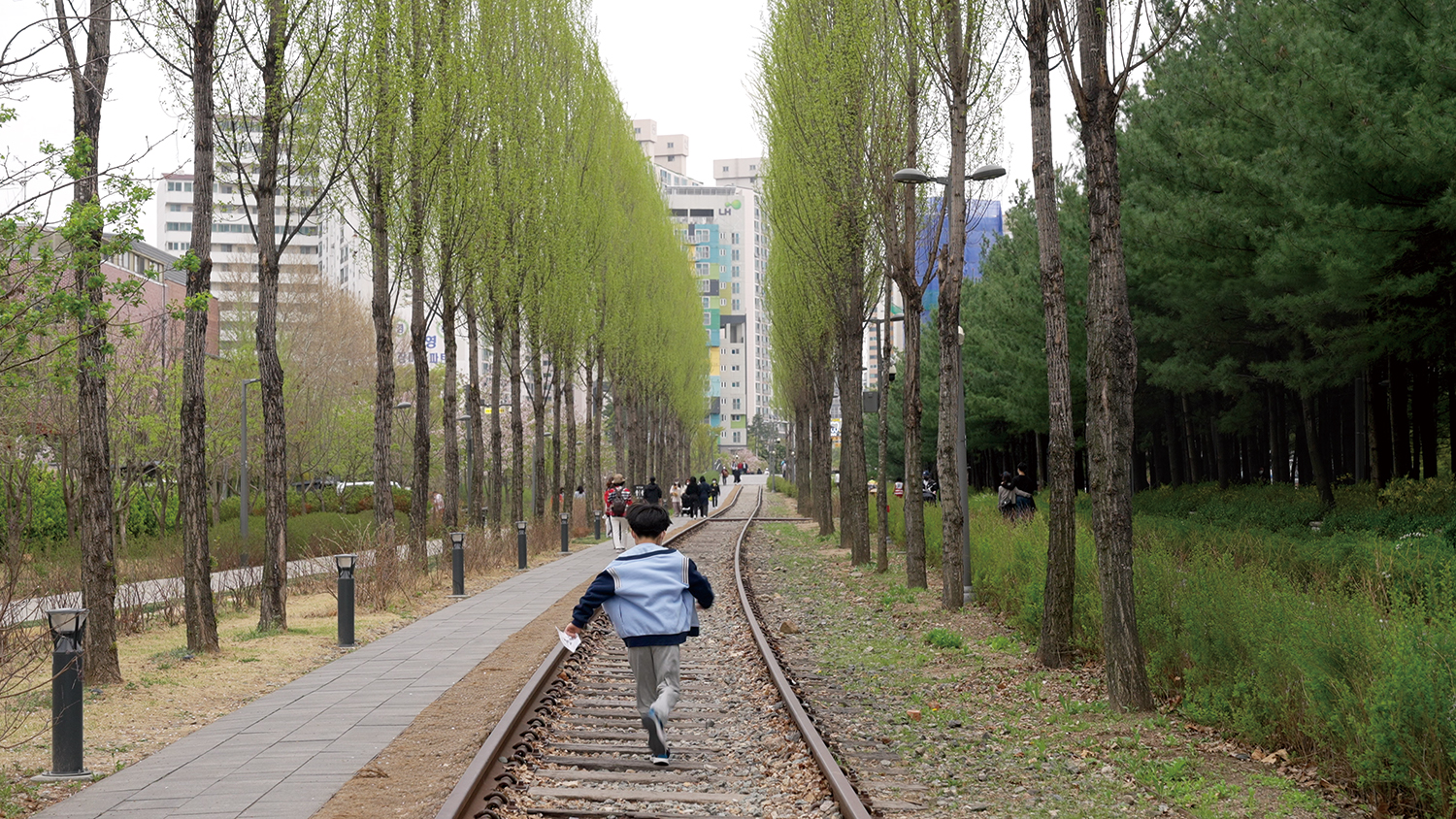
Gyeongchun Line Forest Trail (2017). It was intended to preserve modern industrial facilities such as railroad tracks and railroad bridges, as well as the surrounding green areas, and return them to the daily space of local residents. It was created as a small garden space that local residents cultivate together, a book café made of abandoned trains, and a space for village events. Image courtesy of JINJIN Pictures / ©Giraffe Pictures
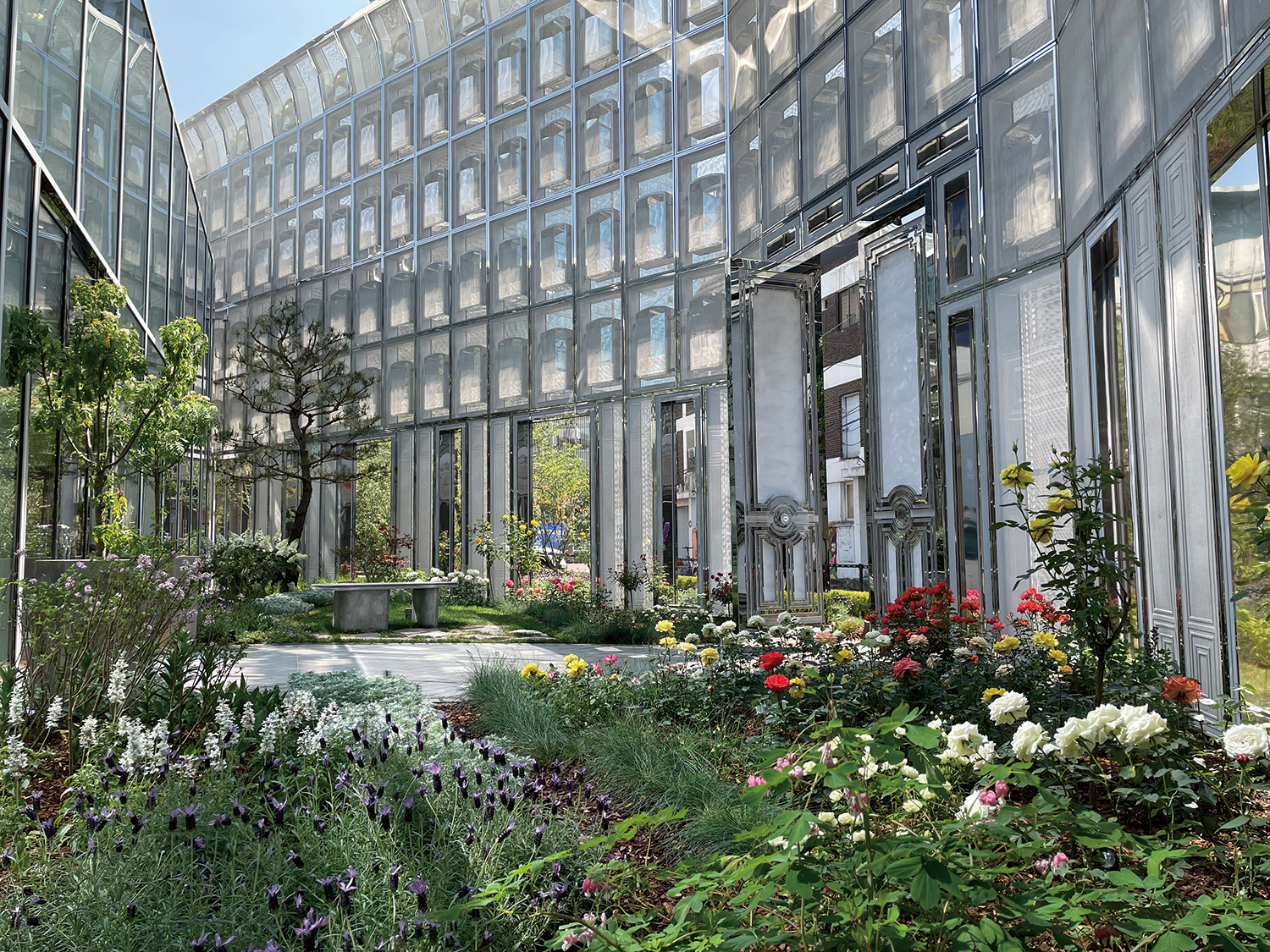
Seongsu Christian Dior (2022). Jung Youngsun researched Dior’s private garden, Dior’s favourite plants, and the raw materials used in Dior cosmetics, while also considering the landscape architecture that Dior wanted to do. At the same time, since it’s in Korea, Jung filled one side with Korean plants. Image courtesy of Seoahn Total Landscape Design & Consulting Group
Park: You’ve also collaborated with many architects including Joh Sungyong, Kyu Sung Woo, Seung H-Sang, Cho Byoungsoo, Cho Minsuk, and Choi Wook. How do you coordinate your collaborations with architects, as it can be difficult to clearly distinguish working points such as the order of ideas and the scope of work?
Jung: First of all, I try to understand the architecture very well and use the architect’s intention as much as possible. I make concessions when I have to, and I’m stubborn when I have to be. It’s one of the skills of collaboration to be able to give in to some demands and still convince them what I really need to do. I think it’s a basic courtesy for architects and landscape architects to listen to each other. In terms of partnership, I haven’t changed the partners in different areas, such as civil engineering and lighting, since the beginning. It’s important to keep in step with them over time. It is not possible for a lighting designer to create exactly the night scene I have in mind in a short period of time.
Park: As a commission from MMCA Seoul, where the exhibition is being held, you’ve made a work of landscape architecture work for Jongchinbu Madang and Gallery Madang (2024). In particular, in the case of Jongchinbu Madang, you’ve made a work that can integrate Inwangsan Mountain into madang. The view of Inwangsan Mountain was already secured by the design of the MPART SIAPLAN Consortium, so what was the role of this commissioned work here?
Jung: Although the view of Inwangsan Mountain was great, when seen from a landscape architecture point of view, I felt that it was just a leftover space that had not been designed. I felt that it was a bit of an awkward space between the traditional Jongchinbu building and the sophisticated MMCA Seoul building. Most of the time, when it comes to landscape architecture, there seems to be an obsession that it has to be designed naturally. But sometimes it’s necessary to make stairs and steps and lay out a flat path. I wanted the lawn to be a place to meditate and relax while enjoying the beautiful view of Seoul. So the lawn had to be flat, and the stairs had to go up and down naturally. The Jongchinbu building was preserved by creating a step between the Jongchinbu building and the madang, and by planting traditional plants.
Park: One thing that hasn’t changed in your 50 years of practising landscape architecture is the role that your hands play. You still draw drawings by hand and plant plants by hand. What does drawing and planting by hand mean to you?
Jung: I do it because I have to. I don’t think it has to be done by hand to be meaningful, but I don’t trust computer drawings. I don’t think they can convey how I think in my mind. It is necessary to distinguish between the sceneries of spring or late spring, summer, and autumn by colouring them all, but it’s difficult to capture such expressions on a computer. So I trust my hand. Anyway, it’s what I’m used to and what I like to do.

Jongchinbu Madang (2024). By organising the front part with a low stylobate to secure the view, it helps with the view of Inwangsan Mountain, and uses stone similar to the exterior finish of the art museum to blend in with the modern building, but uses shrubs to create a traditional feeling. Image courtesy of MMCA / ©Woo Seungmin
Park: You’re still involved in planting on site. In the film, you show the direction of the planting to take account of the inclination of the flowers and you personally move a small stone from one place to another. What details do you consider important in landscape architecture?
Jung: Determining the spacing of trees based on how they will grow, or planting them more densely based on the proportions of the overall design are examples of details. Most of this is done by teaching and correcting as the project progresses, explaining how I feel on site, so that we can take it in a better direction based on the drawings of each site. We don’t look at only the big picture just because it’s a large-scale project, and we don’t ignore the small-scale projects. The attitude towards any kind of project is always the same, regardless of the size of the project.
Park: This shows the character of Seoahn Total Landscape Design & Consulting Group, which has characteristics of both an atelier and a large office.
Jung: We don’t make money. We are not a money-making office. (laugh)
Park: Your private garden at Yangpyeong is like a laboratory for growing Korean native plants. You’ve spent years tending wild grasses and wild flowers, learning their characteristics, and then using them in projects that are appropriate for them. How has this practical approach influenced your life and work?
Jung: In landscape architecture, the concept of season and time of day is very important. It is different in the early morning, before noon, in the afternoon, at dawn, and at night. I am touched by nature, which constantly changes. The landscape architecture that touches me every time new buds sprout and flowers wither is the landscape architecture that can serve as a tool for communicating with nature. If people can talk to nature in this way, we can move from an attitude of human control over nature to an attitude of living with and respecting nature. I believe it is our mission to help people see nature – which is ever-changing – with loving eyes.
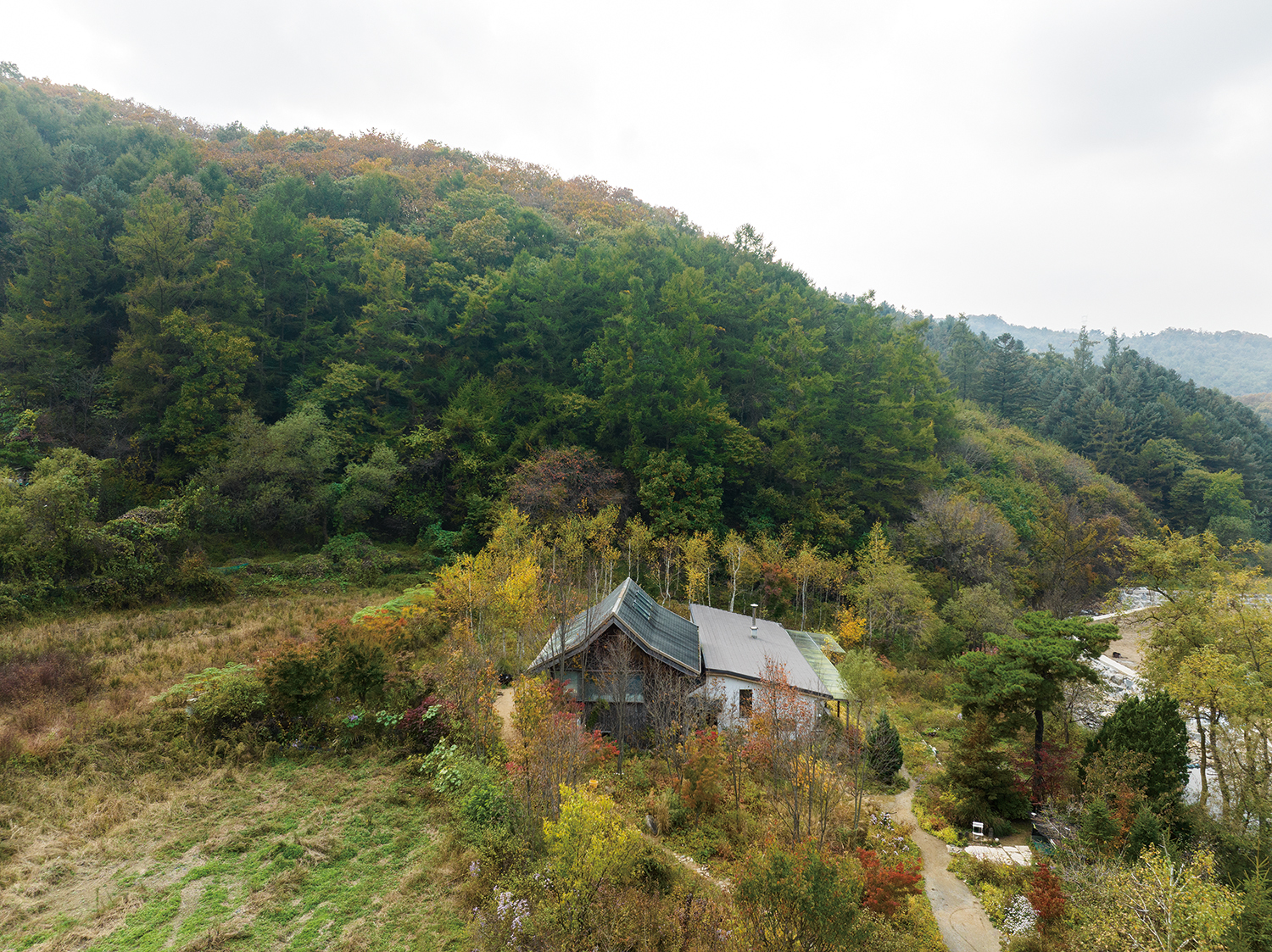
Jung Youngsun’s private garden at Yangpyeong is like a laboratory for growing Korean native plants. She has spent years tending wild grasses and wild flowers, learning their characteristics, and then using them in projects that are appropriate for them. Image courtesy of MMCA / ©Jihyun Jung






